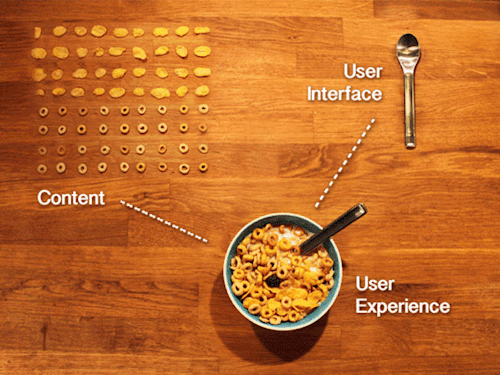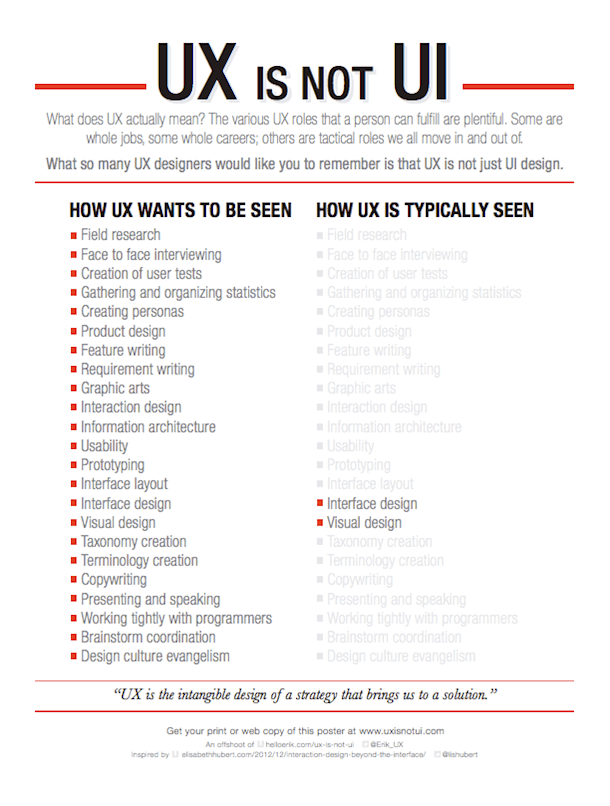
Take a look at this bowl of cereal. You won’t ever confuse user experience (UX) and user interface (UI) design again.
Yet, UX and UI remain two of the most confused terms in marketing. People tend to switch one term out for another, assume that UX and UI are only about look and feel, or pit UX and UI against each other. To begin clarifying these terms, let’s start with UX.
What’s UX?
UX encompasses a lot of things—including UI—which is why the two terms get so easily confused. This infographic shows how most people perceive UX by limiting their view to only UI.
It helps to think of UX generally covering three areas that include the totality of work that goes into making sure a product is attuned to the user:
- Strategy: The upfront work of UX is very strategic. A UX specialist will conduct a lot of user research (both quantitative and qualitative), competitive analysis, and benchmarking against industry standards to generate ideas that lead to a strategy. That strategy will also take business, marketing, and branding goals into account.
- Design: The subset of UI lives here, but UX goes beyond just look and feel. A UX specialist will also focus on designing information architectures, prototypes, and end-to-end experiences that may transcend just a website.
- Implementation: A person just focused on UI might hand off a design to be implemented. A UX specialist sees the project through implementation. Implementation includes testing with users, applying feedback to improve the final product, and measuring success once the product is released into the world.
What’s UI design?
UI design is an extremely important part of UX, but a limited part. UI design is more familiar to people—the digital, front-end design of user-facing websites, web applications, and mobile apps. It includes look and feel, colors, fonts, and the arrangement of visual elements that influence how people interact with the product.
Why is UX/UI distinction important?
While important, UI design look and feel is not a strategy and doesn’t delve into the level of detail necessary to account for a user’s total experience with a product. In other words, by thinking UX is UI or confusing the two, you’re limiting the set of strategic tasks you need to address when creating or redesigning a product.
Thinking of UX as just UI design means you miss out on the strategy behind why you’re creating or redesigning a product. Why do users need your product? That’s a big question that only a total UX approach can answer.
Remember, take the time to understand the user. No shortcuts, guesses, or the arrogance of thinking you know everything about the user. You don’t. Only the user knows. And that’s who you have to build your entire product around.

